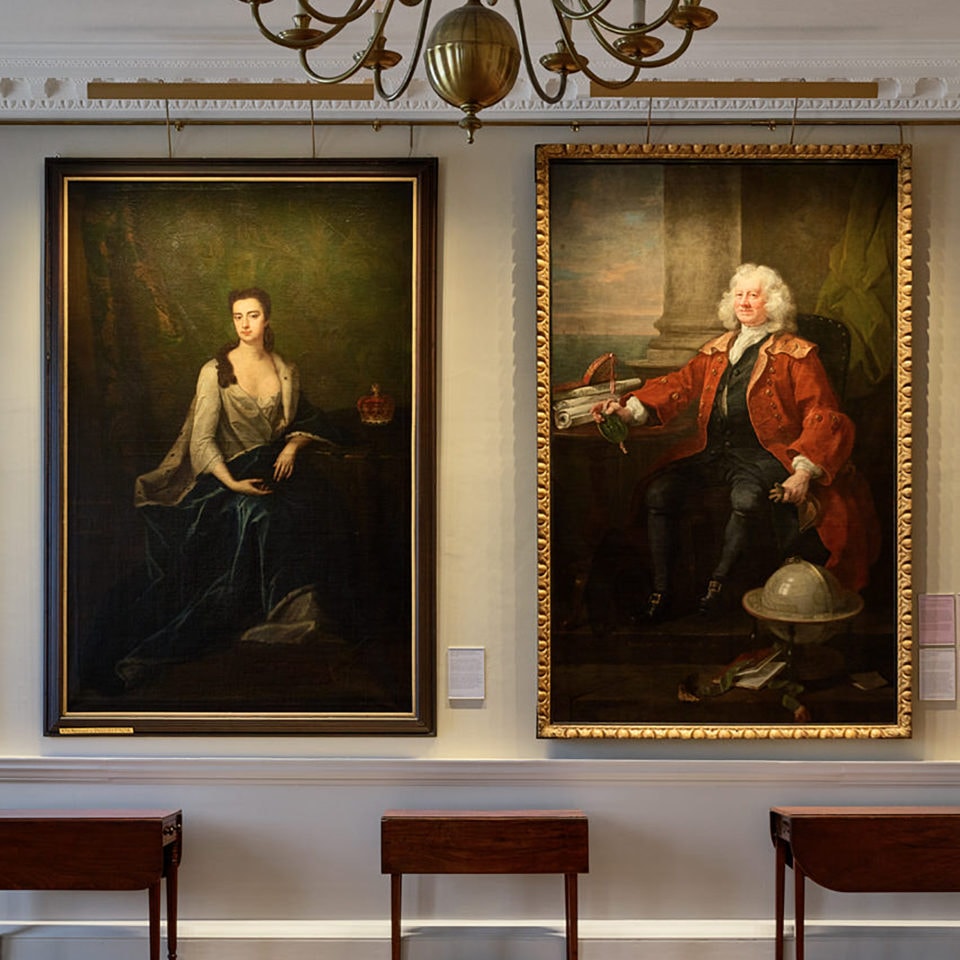Portrait of Captain Thomas Coram
Captain Thomas Coram (c.1668-1751) campaigned for seventeen years before his dream of creating a foundling hospital in London was realised in 1739. Coram was a sea captain and shipwright, and established a ship-building company in Boston, in what is now the USA, but was then a British colony in America. In 1719, he retired to Rotherhithe and devoted his life to public service.
This masterpiece by William Hogarth was the first painting presented to the Hospital and started a tradition of artists donating their work. It is Hogarth’s only known full-length portrait and he is clearly using this opportunity for public display to demonstrate his talents in this field. Whilst Hogarth fills this painting with the traditional trappings of eighteenth-century Grand Manner portraiture – the sitter is raised on a dais, with a classical column and swag of material behind – he presents Coram in an honest and non-idealised way. Hogarth paints Coram with his own hair rather than a wig, dressed in comfortable plain clothes and with the ruddy, gnarled hands of a seafaring man. Coram is surrounded by symbols of his work: he holds the seal of the Foundling Hospital charter; the globe shows England and New England; the hat was presented by the hatters of London whom he assisted with a trade dispute; the allegorical figure of Charity is just visible on the wall behind him.
Portrait of Charlotte, Duchess of Somerset
After ten years trying and failing to persuade a single man of influence to sign his petition calling for the establishment of a foundling hospital, Coram travelled to Sussex to meet Charlotte, Duchess of Somerset. Her husband, Charles Seymour, Duke of Somerset, was the richest man in England and their residence was Petworth House. Charlotte was the Duke’s second wife. Married in 1725, they had two children. On 9 March, 1729, Charlotte became the first person to sign Coram’s petition. Her husband would sign the Royal Charter in 1739.
This portrait was painted by Charles d’Agar (1669–1723), a French painter who came to England in 1681 with his artist father Jacques. He mainly painted commissioned portraits for patrons.

